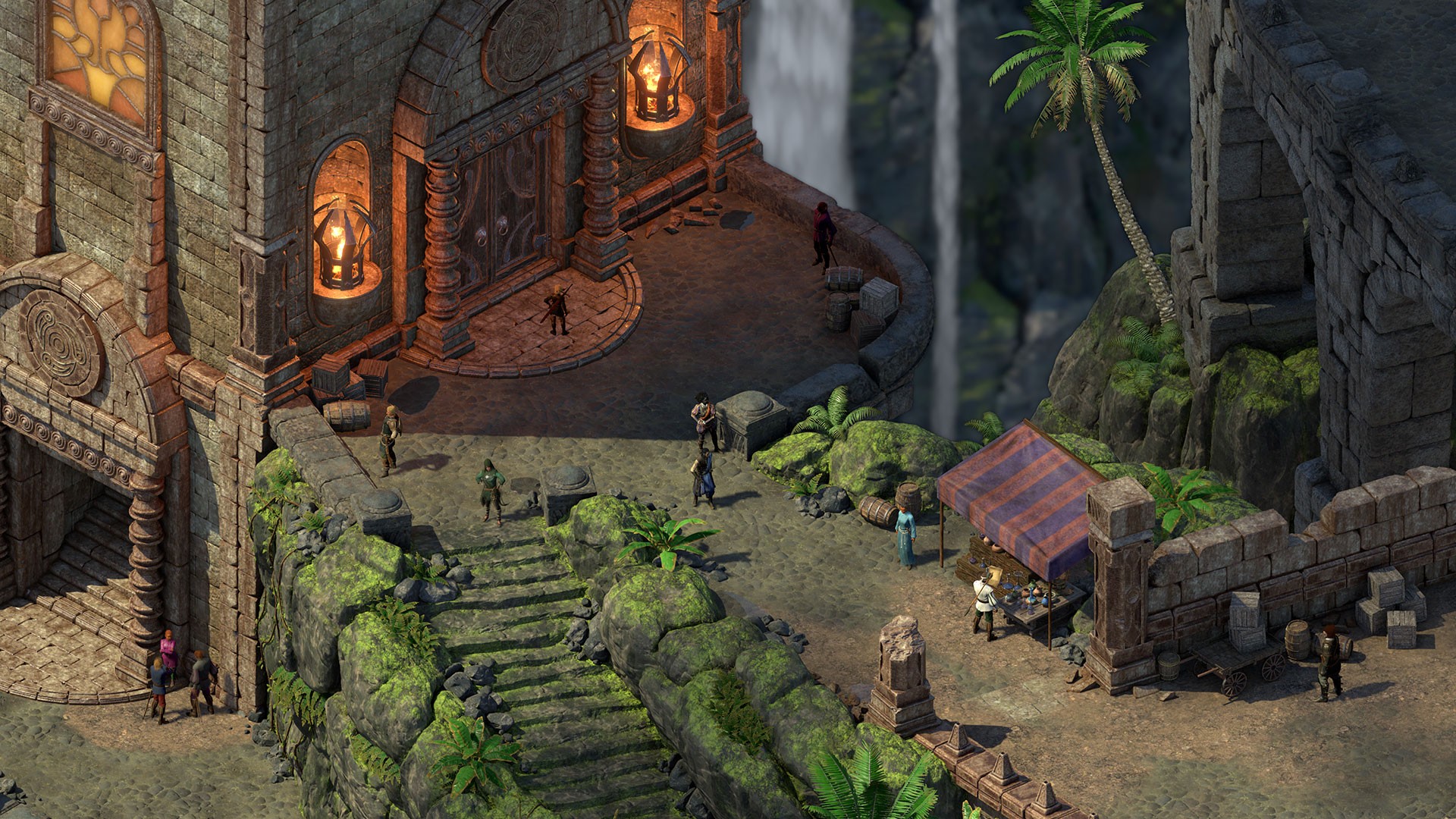How is the work on creating fictional universes in the studio that gave the world Pillars of Eternity and Tyranny, told the narrative designer from Obsidian Alex Skokel (Alex Scokel).
App2Top offers you a short retelling of Alex Skokel’s interview for PCGamesN.
Pillars of Eternity II: Deadfire
The beginning of creation
At what stage to start building a fictional world depends on the game itself. Sometimes, by creating a world, a developer tries to solve a particular production task. Sometimes you have to build a world at the same time as the game design process, since the basic gameplay must be supported by ent. In part, at what stage you need to start thinking through the ent and creating maps depends on the importance of the narrative component of the project (and in Obsidian games, there really is nowhere without a narrative).
For example, the first sketches of the game lore Pillars of Eternity II: Deadfire appeared at the pre-production stage. Of course, before the release, the ent managed to change many times. Although initially the ENT always looks like that, delete one idea from it — and the whole world will collapse. But in fact, the creators of the worlds have to make a lot of edits to the internal wiki of the game. That’s why you shouldn’t get attached to ideas that haven’t been approved yet. After all, in practice (in the game itself) they may not work as well as in theory.
But the creation of the world does not end there. The world continues to evolve and grow even after the game is approved and released. And the ideas embedded in Laura will become unshakable when they appear before the players. And we don't want that to change.
narrative designer Obsidian
The basics of Creation
The world of Tyranny is almost nothing like other fantasy universes. At the same time, the Eora in Pillars of Eternity looks familiar at first, but over time its differences from fantasy worlds become more and more noticeable.
Tyranny
Of course, we had to work more on the Tyranny ent at the pre-production stage than on the ent for Deadfire. After all, Pillars of Eternity was created under the influence of the well-known D&D. Although even here there were questions whether this or that content in Pillars of Eternity would be as appropriate as in other D&D-inspired projects.
But the ideas for the world of Tyranny are drawn from things that are not familiar to everyone: for example, Exalted (a tabletop role-playing game), Greek and Roman history, post-apocalyptic motifs. And many developers in the team had to study all this.
The process of creation
A lot also depends on the specifics of a particular project. Sometimes scriptwriters and designers of locations are forced to maintain constant contact. And sometimes both get more creative freedom and are not so much dependent on each other.
Pillars of Eternity II: Deadfire
Pillars of Eternity II: Deadfire differs from the first part in that the events of Deadfire take place on an archipelago — a group of isolated islands. The stories of the different villages are almost not interconnected, although they are influenced by different France. What happens in one region does not affect events in another region. Therefore, each of them seems to be in its own vacuum. Thanks to this feature of the game, the narrative designers responsible for the regions could create plots almost freely. They were not afraid that the ideas embodied in one area of the world would cross out the ideas of another.
I think this approach has its pros and cons, but it worked great for Deadfire.
Obsidian narrative designer
Of course, it is very important that the ENT remains intact, even despite the isolation of areas of the game world. That is, nothing in it should contradict each other.
Eora is a world based on rules, and when creating it, we must be guided by their logic so that any player's choice has weight. If a portal suddenly opens and orcs fall out of it, it will undermine the player's confidence in the realities of the world and in their own actions.
narrative designer Obsidian
But sometimes such unthinkable things as conditional portals with orcs become the subject of disputes within the development team. For example, designers of areas can say that this is where it is necessary to do this and that, and narrative designers grabbed their heads: “It’s impossible, it doesn’t work like that!” Therefore, it’s not worth completely excluding the interaction of teams responsible for various aspects of development, of course.
Pillars of Eternity II: Deadfire
New creations?
Obsidian has built its reputation on creating holistic, vibrant, memorable worlds. And, obviously, there are still a lot of unexplored corners in them, where the events of the next studio projects can unfold.
DLC for Deadfire are kept within the setting, but as for where we go next... The question is still open. And we are still discussing it with the whole team, although many are already offering quite intriguing ideas about what they would like to see and where to visit.
narrative designer Obsidian
Also on the topic:
- Pillars of Eternity Chief Designer: Role-playing games need radical changes
- The designer of Pillars of Eternity II about the development of the sequel and the anger of fans
- Obsidian has released a documentary about the development of Pillars of Eternity
Source: PCGamesN





